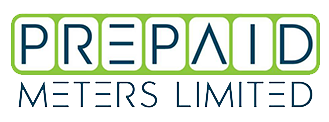- Energy-Efficient Appliances: Use energy-efficient appliances, such as refrigerators, air conditioners, washing machines, and light bulbs. Look for appliances with the Energy Star label, as they are designed to consume less energy and operate more efficiently.
- Unplug Electronics: Even when electronics are turned off, they can still draw power if they are plugged in. Unplug chargers, televisions, computers, and other electronics when not in use to avoid “vampire” energy consumption.
- Smart Power Strips: Use smart power strips that automatically turn off power to electronics when they are not in use. These power strips help eliminate standby power consumption and can significantly reduce your energy usage.
- Natural Lighting: Take advantage of natural light during the day by opening curtains and blinds. Use task lighting or energy-efficient LED bulbs when additional lighting is needed.
- Temperature Control: Set your thermostat at a comfortable temperature and avoid extreme settings. Consider using fans or natural ventilation instead of relying solely on air conditioning. In colder months, use weatherstripping or draft stoppers to prevent heat loss.
- Energy-Efficient Lighting: Replace traditional incandescent light bulbs with energy-saving LED or CFL bulbs. These bulbs consume less energy and last longer, providing cost savings in the long run.
- Power Management: Enable power-saving features on your computer and other electronics. Set them to automatically enter sleep mode or power off when not in use for a certain period.
- Energy Awareness: Be mindful of your energy consumption. Turn off lights when leaving a room, unplug chargers when devices are fully charged, and avoid leaving appliances on standby mode.
- Water Heating: Reduce water heating costs by taking shorter showers, using cold water for laundry whenever possible, and insulating the water heater to retain heat.
- Communicate with Landlord: Discuss energy-saving initiatives with your landlord. Inquire about the possibility of installing energy-efficient appliances, LED lighting, or programmable thermostats that can help reduce energy costs.
- Seal Air Leaks: Identify and seal any air leaks around windows, doors, and other openings. Weatherstripping and caulking can help prevent drafts and improve energy efficiency.
- Energy Audit: Consider requesting an energy audit from your utility company. They can assess your energy usage and provide personalized recommendations for reducing consumption.
- Prepaid Meters Limited
- Office Hour: 8:00am - 6:00pm
- MTN: +256 393248909
Airtel: +256 200917147 - info@pml.co.ug
- Kampala, Uganda,
- Plot 29B, Bandali Rise, Bugolobi

